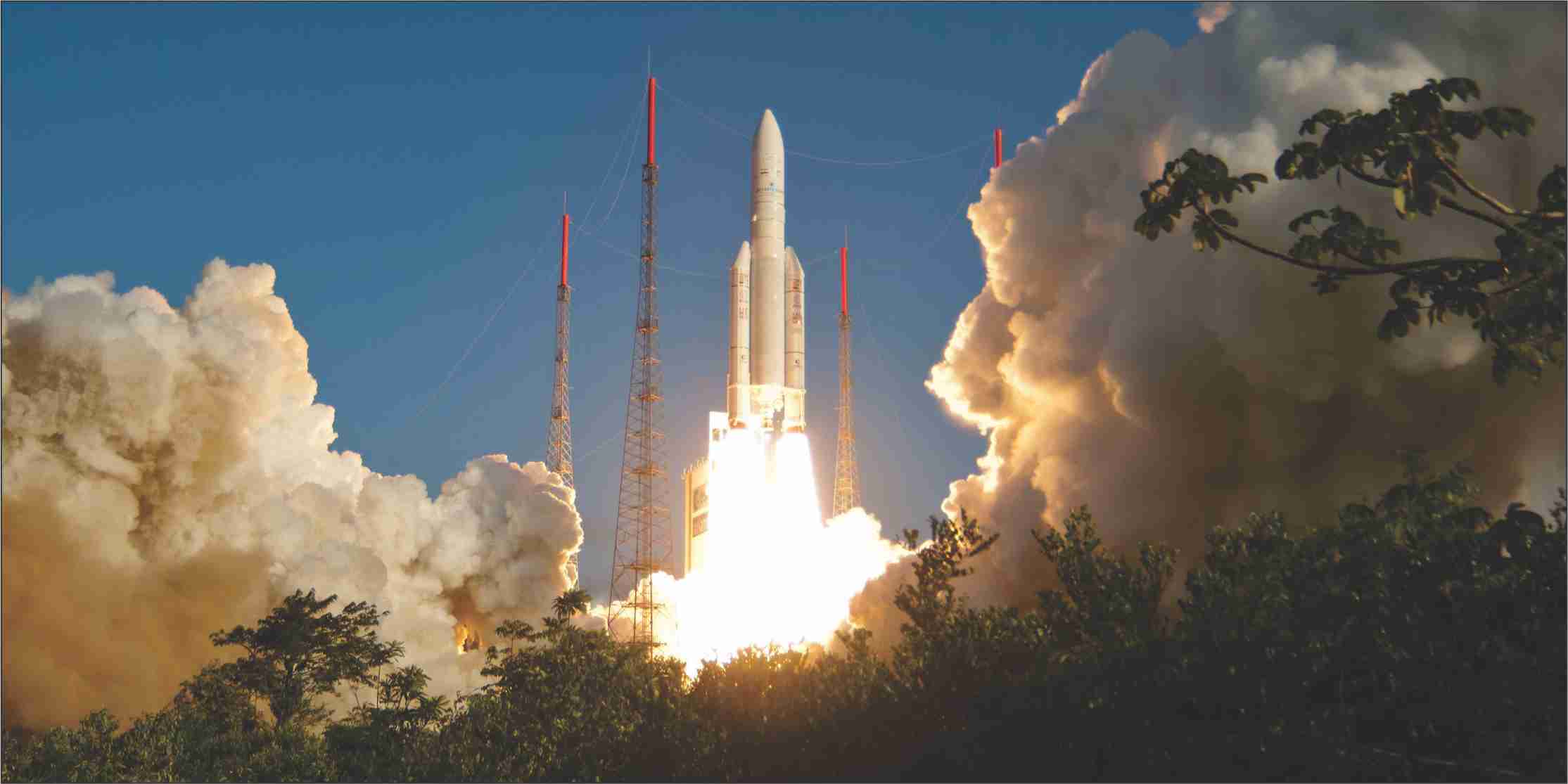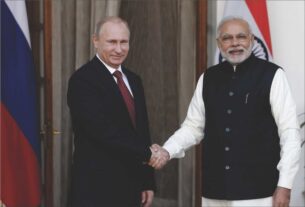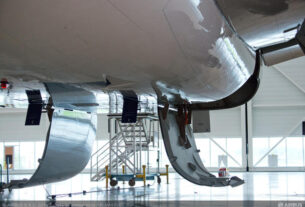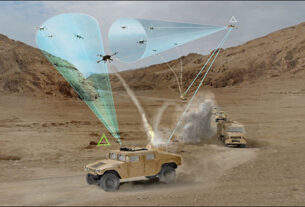Space based communications system for Indian military
Indian defence forces, as part of the strategy to boost operational efficiency and combat fitness at all levels, are looking at acquiring state of the art communications systems that are secure, robust and reliable.
In fact, the massive intelligence failure suffered by the Indian defence forces during and before the 1999 short lived Kargil conflict with Pakistan did bring home the paramount importance of a robust and versatile communications system to stay at the winning edge of the war.
In particular, the satellite based communications system which is immune to environmental dynamics and natural calamities is fast becoming the favourite choice of the Indian defence forces. Of course, space based communications cannot replace in toto the ground based conventional communications systems. But it can be used in tandem with the ground based communications system for meeting “certain specific needs” of the Indian defence forces. Moreover, during the moments of natural calamities, when ground based communications infrastructure is likely to take a hit, an alternative satellite based communications system could be used to establish an instant link. Not surprisingly then the Indian defence forces are more than keen to acquire dedicated communications satellites along with improved technology ground based systems. But unfortunately for Iong the Indian defence services had to make do with the limited access to the INSAT/GSAT series of communications spacecraft being operated by the Indian Space Research Organisation (ISRO).
Space platforms
While the PLA (People’s Liberation Army) of China has a number of dedicated satellites under its operational control, India has so far been able to provide just one exclusive communications satellite for the use of the Navy. The GSAT-7 advanced communications satellite, designed and developed by ISRO and launched by means of the Ariane-5 vehicle of the European space transportation company, Arianespace in August 2013, is now fully integrated into the network centric architecture of the Indian Navy.
Strategic analysts point out that GSAT-7 multi band space platform also known as Rukmini will be a major “game changer” and “force multiplier”. A follow up satellite, GSAT-7A is planned to be launched during 2015-16 to serve as a dedicated communications satellite of the Indian Air Force (IAF). Further into the future, Indian Army too will get an exclusive communications satellite for its use. There is no denying the point that an exclusive communications spacecraft would help the Indian defence forces complete the network centric architecture meant to enhance situational awareness and strike capability. By all means, a network centric environment with a constellation of communications satellites at its heart is critical to boost the combat capability and stealth potentials of the defence forces in the thick of the battlefield. Network centricity is equally important to enhance command and control which facilitates an effective and accurate decision making process.
Significantly, the payload configuration of GSAT-7 has been designed to provide high fidelity and protected communications over a wide oceanic swath and the Indian landmass. With a high performance satellite under its control, the Indian Navy will have no problem in terms of enhancing situational awareness and intelligence gathering capability over the Indian Ocean region.
The GSAT-7 satellite weighing more than 2.5 tonne will help Indian Navy keep a hawk eye in the Arabian Sea and Bay of Bengal areas of the Indian ocean area where arms running and sea piracy are rampant. Moreover, with an enhanced situational weakness that this satellite will bring, the Indian Navy it would be possible to keep a hawk’s eye on the possibility of armed terrorists using the sea channels to mount attack on the mainland India. Indeed, with GSAT-7 satellite in full operational trim, Indian Navy is now in position to overcome the limitations of the line of sight and ionospheric effects normally associated with the conventional communications system.
With a view to boost its striking punch and expand the area of operations, Indian Navy has implemented a well conceived strategy to link up its long range missiles, radars and air defence systems on all sea based assets to a central room through the highly reliable communications network provided by GSAT-7.
There are said to be as many as 19 Chinese satellites keeping round the clock vigil over the Indian Ocean region where Indian Navy has been in a constant expansion mode. Against this backdrop, the need for Indian Navy to go in for a constellation of dedicated communications satellites has assumed more than usual importance. Clearly and apparently, the synergy between the combat platforms moving in the high seas of the world with land based nodes through GSAT-7 capability would help bring about a radical shift in the operational strategy of the Indian Navy which for more than a decade now has been clamouring for such an advanced space platform with a view to refine and strengthen its “sensor to shooter loop” which implies an ability to swiftly detect and tackle a threat. Indeed, the robust communications potentials of GSAT-7 will help the Indian Navy get a digital tactical battlefield view of the dispersed fleet formations, aircraft locations and even submarines moving stealthily in the depths of the ocean.
The belated entry of Indian armed forces to space sector has boosted the optimism of defence forces that they will not lag behind far compared to the principal rival China which operates almost 100 satellites out of which one fourth is for dedicated military use. The exploitation of dual use satellites being operated by ISRO for military uses is very much on the cards. The growing exploitation of the capabilities of outer space for boosting military communications on the ground has opened the way for clamour for more dedicated satellites. For the satellites assist the forces in obtaining battlefield transparency of the rival forces. However the biggest concern is that whether ISRO with its limited infrastructure for building and launching satellites would be in a position to fully well cater to the rapidly expanding “space resources’ needs of the Indian defence forces. Perhaps the best way out would be the setting up a full fledged defence space agency that could initially draw from the resources of ISRO and Defence Research and Development Organisation (DRD). The Technology Perspective and Capability Road Map (TPCR) unveiled by India’s Defence Ministry envisages an ambitious plan for a satellite based communications network with high data rates and multi band operations for voice, data and allied applications.
In addition to exploiting the satellite capability for communications and enhancing situational awareness at all levels of operations, Indian defence forces could make use of advances in communications and sensor technologies to give a “greater punch and thrust” to its warfare strategy. However, keeping the information and communications network and support systems in an operational trim in the context of the expanding scope of “cyber war” has assumed more than usual importance. In particular, precaution should be exercised to ward off the threat of jamming that satellite communications systems are vulnerable to.
Network centricity
Network centric warfare capability relies as much on rapid communications made possible by satellites channels and ground based communications architecture as on computer processing power to provide shared information of the battlefield amongst the armed forces. For India’s proposed tri service aerospace command, a large communications capability based on satellites is a major requirement. IAF is fully well aware that satellites can serve as an “eyes,” “ears” and “command posts” in outer space to radically alter the outcome of war. On its part, IAF has made a detailed study of the issues relating to the structure and functions of an aerospace command-the formation of which is yet to be approved by the Indian Government-that focuses on situational awareness in all its manifestations and ensures free access to space while denying the adversaries the opportunity to use space platforms in the event of a war. Clearly and apparently, space capability constitutes a key element of the network centric system to integrate the resources of all the three wings of the services. As the IAF doctrine points out, space capability holds the key to the radical transformation of the combat capabilities.
On is part, Indian Army too focuses on space based assets as powerful force multipliers for network centric warfare strategy. A satellite based network centric approach helps derive advantages in terms of the ability to stay ahead of an opponent and dictate the dynamics of engagement. By all means, satellites hold the key for a well coordinated and synchronized operations of a battlefield strategy by seamlessly integrating weapons systems, missiles, radars and sensor suits, UAVs, UCAVs, electronics and communications network, fighter jets, transport aircraft, logistic and support system and defence forces spread across a vast geographical swathe to sustain “strategic superiority” at all stages of operation.
Says the Indian Army “The army realizes the importance of space as a vital arena for future exploitation and has already established a Space Cell to coordinate space based applications in a joint services operational environment. Space applications are expected to enhance effectiveness of the army even in noncombat operations through the use of space based communications, weather forecast, avalanche warning and navigation”.
Indian Army’s Tactical Communications System(TCS) designed to support offensive operations and battlefield management system(BMS) for communications at the tactical level in defence operations would constitute the sinew of the communications services of the Indian Army. This mobile, survivable and reconfigurable network would facilitate the real time transmission of images of battlefield video on the move that includes armoured to artillery and infantry battalions. TCS which will replace the aging and obsolete AREN system is designed to facilitate quick exchange of information and a speedier target acquisition.
Communication network
On the other hand, ASCON (Army Static Switched Communications Network) constitutes the backbone communications network of the army which provides voice and data links between static headquarters and those in peace time locations. It is expected to be of modular design so that it can be upgraded as and when improved technology becomes available. Significantly, ASCON was evolved by the Indian Army to integrate the telecommunications infrastructure of the hinterland with the tactical communications network. It is a digital fully automated, secure, reliable and survivable static communications system based on microwave radio, optical fibre cable as well as satellite and milli-metric wave communications devices.
The IN R3000-million advanced AFNet communications system of the Indian Air Force(IAF) launched in 2010 replaces obsolete communications network based on the outdated tropo scatter technology of 1950s .This gigabyte digital information project has Satcom network as an overlay . According to IAF “Integrated Air Command and Control System (IACCS), an automated command and control system for air defence operations will ride AFNet backbone, integrating all ground based and airborne sensors.” This secure, reliable and robust communications network will boost network centric strategy in a big way.
AFNet incorporates the latest traffic transportation technology in the form of IP (Internet Protocol) packets over the networks using Multi Protocol label Switching . A large VOIP(Voice Over Internet Protocol) layer with stringent quality of service enforcement will facilitate robust high quality voice, video and conferencing solutions. Integrated Air Command and Control System (IACSS), an automated command and control system for Air Defence operations will serve as the AFNet backbone integrating all ground based and air borne sensors, AD (air defence) weapons systems and C2 nodes. The network is secured with a host of advanced state of the art encryption technologies. As it is, AFNet is also capable of transmitting videos from UAVs, pictures from AWACS to decision makes on the ground and providing intelligence inputs from remote areas.
This IAF communications system will ultimately network all the three wings of services as part of the network centric battlefield strategy. Network centricity is crucial to enhance command and control which facilitates an effective and precise decision making process. The basic components of a network centric configuration revolves around improved information sharing through a robustly networked force, enhanced quality of shared information and collaboration as well as self synchronization through shared situational awareness.
As pointed out by an IAF official, “Network centricity involves linking up ground, air and space assets to have a complete situational awareness. Without network centric strategy, you cannot survive for long against a good adversary”.
Indeed with AFNet in place, IAF would be in a position to rapidly link all its ground, air and space assets to get a complete situational awareness of the area it wants to secure and dominate. The real time, round the clock sharing of reliable information among the armed forces based on the land and sea and moving in the air makes for the successful implementation of network centric strategy.
A constellation of satellites along with a robust ground based information and communications network could serve as the vital backbone of the network centric battlefield strategy. And all the three wings of services in India are working towards exploiting the space based and ground based communications systems in a big way with a view to stay ahead of the adversaries.




